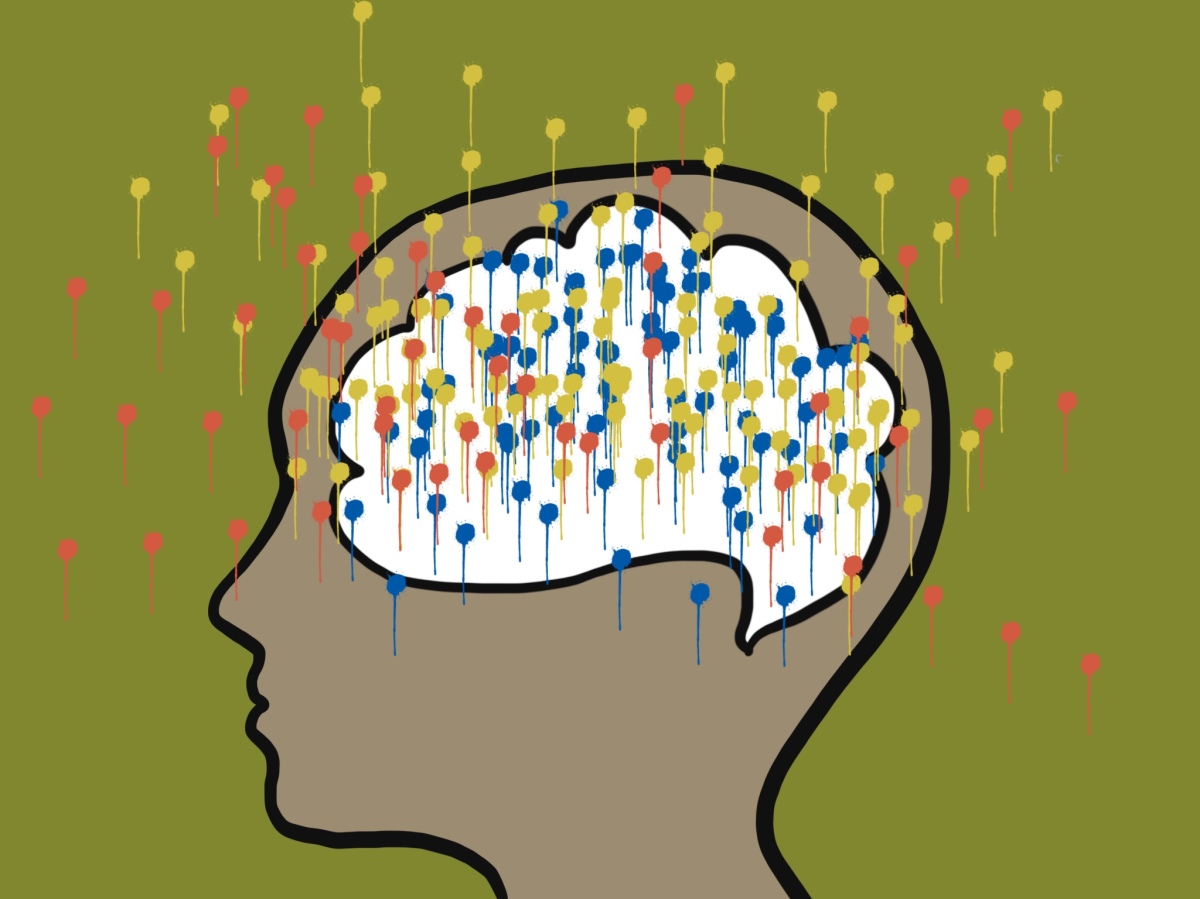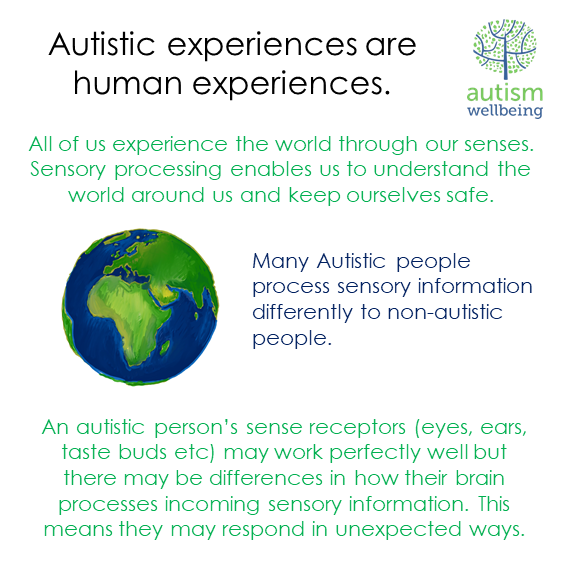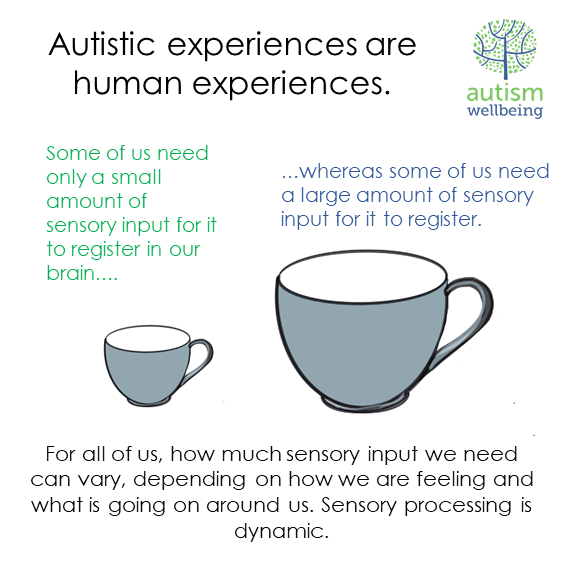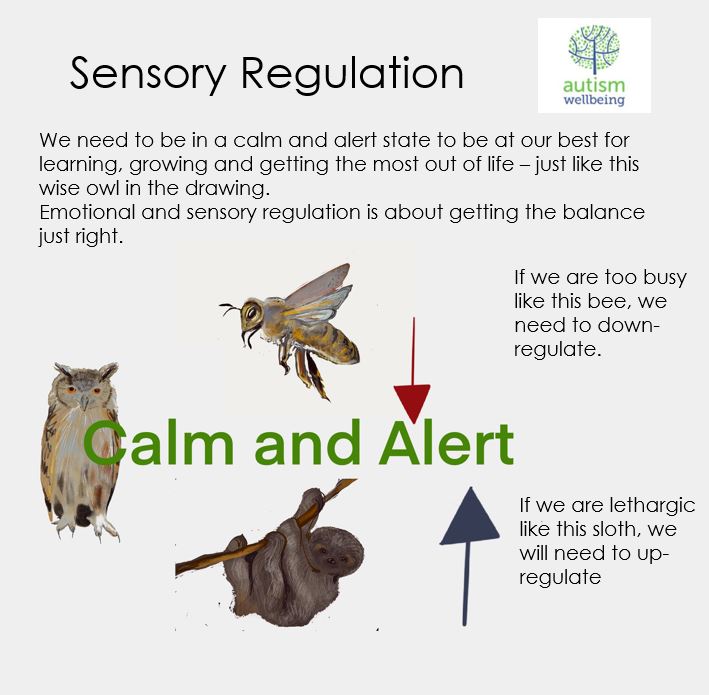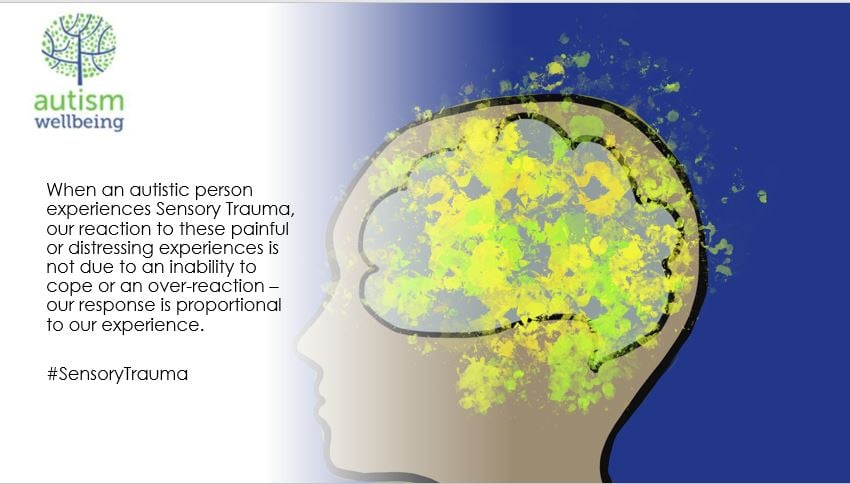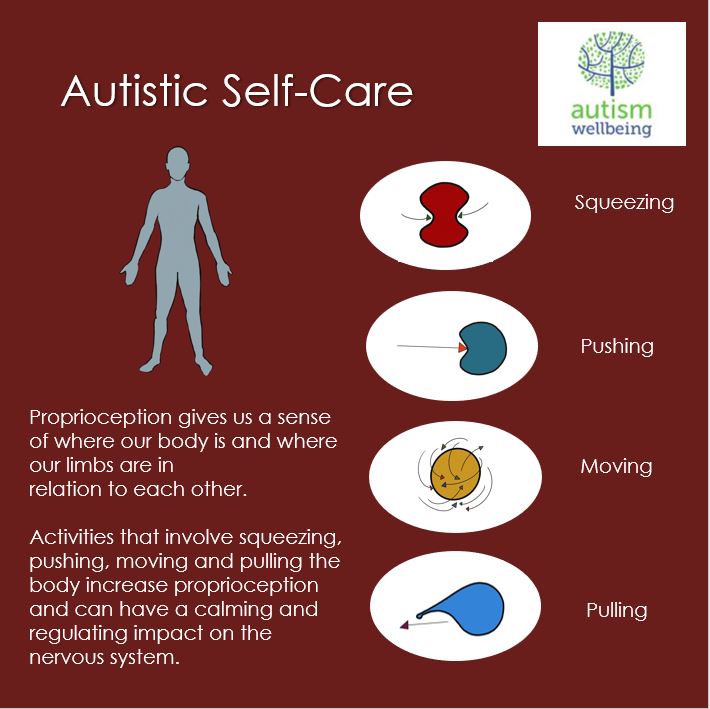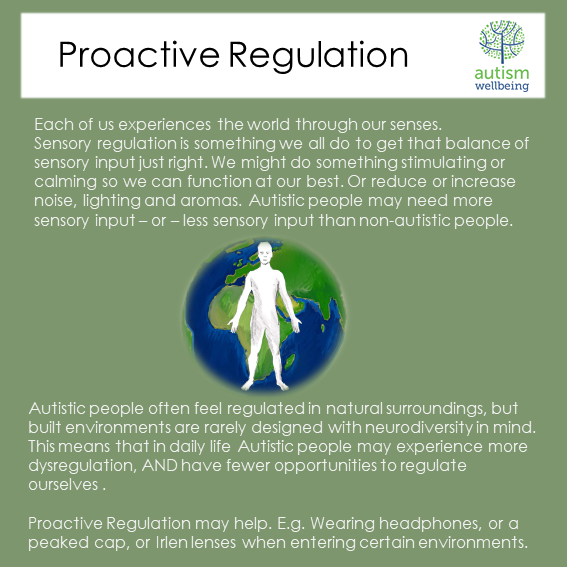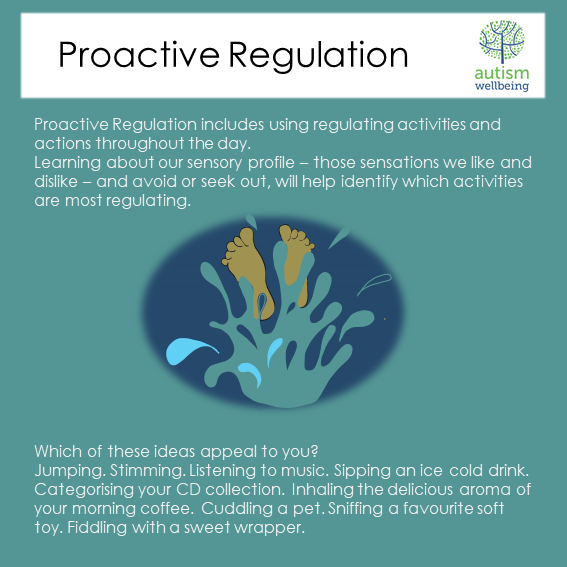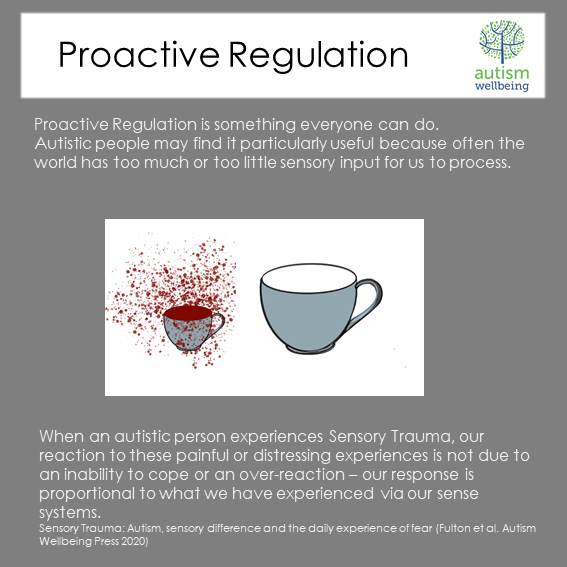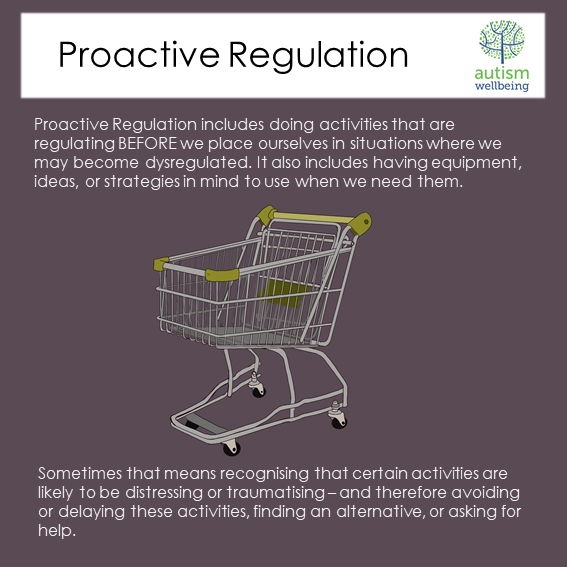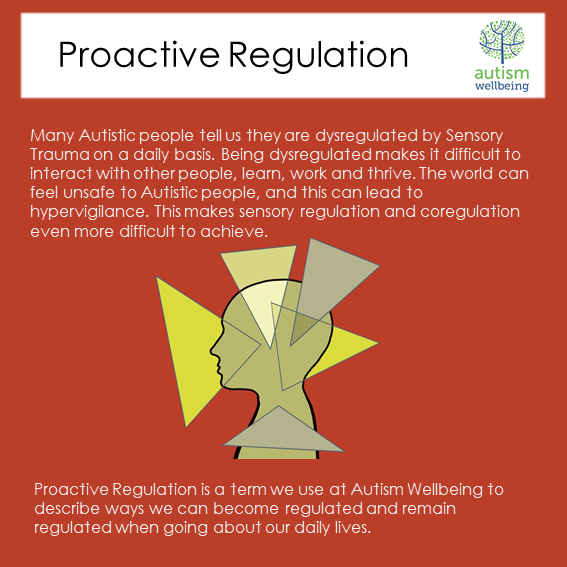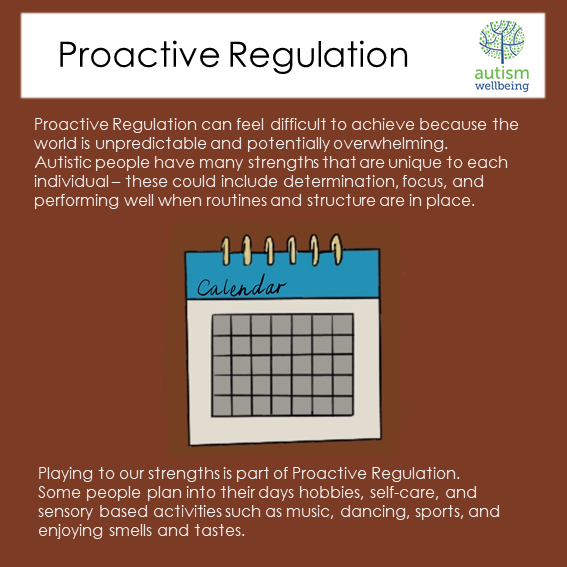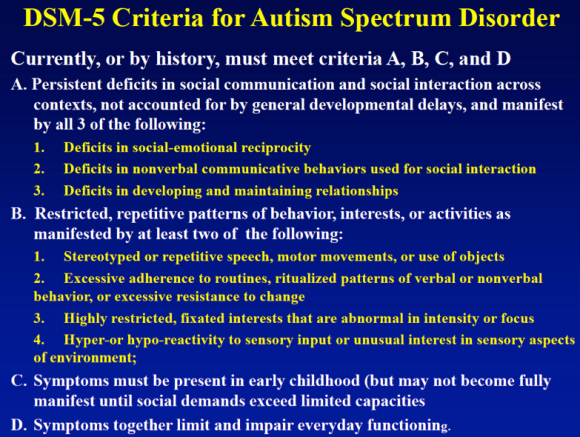Can my sensory differences really feel like this? This blog explores some of the interesting, terrifying, joyful, stim-tastic, and plain strange, ways that humans – especially autistic humans – can experience the world through our sense systems.
The medical language about autism uses words like disorder, abnormal and atypical, and suggest that there is one, standard sensory processing norm from which Autistic people deviate. This is not the case. Each of us, Autistic and non-autistic alike, has our own individual way of processing sensory information.
How does our sensory processing system work?
Each and every one of us experience the world through our senses. Sensory processing is the process by which the nervous system receives, organizes and interprets sensory information. Sensory processing helps us figure out how to respond to environmental demands based on the sensory information available to us. As humans, we are constantly picking up sensory information from our environment via our sense receptors. As part of this subconscious process, our brains filter out sensory information that is safe to ignore so that it can focus on information important to tune in to. We also process sensory signals arising from within our body that help us to know how we are feeling, where our body is in space and the effect of gravity on our body.
Some examples of this include:
- If I see a light that is very bright, I look away or shield my eyes.
- When I open my refrigerator and smell the opened bottle of milk, I can tell if it is fresh enough to drink, or if the smell makes me gag, I pout it away.
- If I climb up onto a step ladder and feel unstable, I climb back down.
- When I notice that I need the toilet, I use the bathroom.
- When my favourite song comes on the radio, I get a feeling of warmth in my body and I can’t help but move my body to the beat.
Being able to use sensory information in this way helps keep us safe; helps meet our body’s needs – eating, drinking, using the toilet etc; and tells us how we feel about things.
Survival Responses
When we feel threatened – when our brain perceives a threat in the environment – we instinctively take action in response to that threat. Our three main survival responses are fight, flight or freeze. Sometimes, when we are feeling regulated and in a safe place, we may be able to override these survival responses and cognitively weigh up the extent to which we are actually threatened.
Sensory Trauma
On account of our sensory differences, Autistic people may live our daily lives in a state of heightened stress and anxiety, many of us experiencing Sensory Trauma. Sensory Trauma may arise from painful and distressing sensory experiences. For many of us, these painful or distressing sensory experiences are associated with activities that are typically part of normal
everyday life. We may then face the additional trauma of not being believed, being mislabelled as over-reacting or attention seeking and even in some cases (mis)diagnosed as mentally ill.
The invalidation I experienced growing up consisted of messages along the lines of “Nobody else is complaining about the noise hurting their ears, you always have to make a fuss” or statements starting with “The trouble with you is….”. This, along with the painful sensory experiences that accompanied my daily life, eroded what limited sense of agency and self-esteem I had, and made me question my reality. My identity was already shaky due to the muted way I experienced awareness of where my body was in space and the muted sense of how I felt about people, situations and myself. I knew that I experienced the world differently to most people – and the messages I received about that, were that I was wrong! I became engulfed in shame.
If you’d like to read some examples of Autistic people’s sensory experiences, Autism Wellbeing’s free downloadable booklet, Autism: A Guide for Parents offers further insights, and is a piece of work myself and my colleagues created with the testimony of Autistic adults. You will find the booklet on our free downloads page.
https://www.autismwellbeing.org.uk/resources
As Sensory Trauma and the potential for Sensory Trauma are ever-present over the course of our days, as Autistic people, we may spend our waking hours constantly on edge, hypervigilant and at risk of tipping over at any time into one of the three survival responses. The longer we live in a state of heightened anxiety, the more our nervous system becomes used to functioning in that mode or on that “setting”. We may become habituated to being on the look-out for the next potentially distressing sensory experience.
If you’d like a more in-depth read about autism language, sensory processing and Sensory Trauma, take a look at our work.
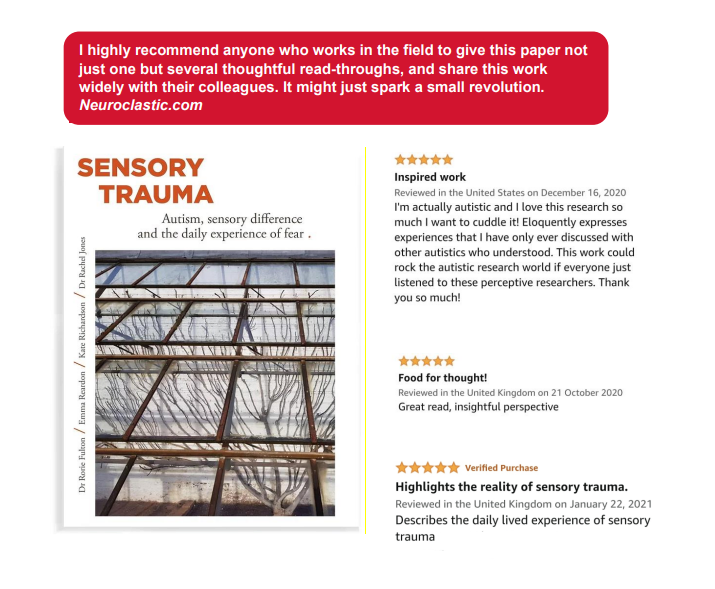
Buy the book (free on Kindle Unlimited)
Sensory Profiles
Each of us has sensations that we like or are able to tolerate, as well as some we do not like and find difficult to tolerate. Many Autistic people process sensory information differently to our non-autistic peers. For Autistic people, our sense receptors (eyes, ears, taste buds and so on)
may work perfectly well but there may be differences in the way our brain processes the incoming sensory information.
The two most well known sensory processing differences are due to experiencing sensory input in a heightened or muted way. My brain usually processes auditory information in a heightened way. This means I only need a relatively small amount of noise to register with my brain, and loud noises are processed as painfully loud. Whereas I need lots of proprioceptive input before I notice what my arms and legs are up to, on account of my muted proprioception. This means I tend to use too much force and appear heavy handed or clumsy. One of my earlier blogs explores sensory processing in more depth.
Sensory processing does not happen in isolation, it is not just about our ability to process that particular piece or kind of sensory information. Sensory processing is dynamic and highly context specific – it is about how we experience a specific sensation, at that particular time (in light of what has come before and anticipation of what may come next), in that particular environment, in the company of those particular people, whilst in that particular emotional state.
Sensory Modulation
Sensory modulation is an ongoing process – it’s how our brain fine tunes incoming and internal sensory signals so as to make sure we are in a state of balance where our capabilities are open to us to use. Sensory information is constantly being registered in the brain and sensory modulation continuously makes adjustments to help us function, learn and connect with others optimally. Being in this optimal state means feeling calm and alert, being open to new experiences and available for intellectual challenge, social interaction and emotional connection.
For people who have developed in a so-called typical or expected way, sensory modulation goes on all the time, ticking along subconsciously in the background. For those of us who are Autistic, (or have experienced trauma), the process is not always so smooth and many of us have developed idiosyncratic ways of being in the world that support our sensory regulation. The things we do as Autistic people to help us become regulated, may not be things that other people would ever do. We often develop highly effective sensory strategies that help us become regulated – but these strategies may be pathologised by others. This blog about the pathologisation of self-care contains my thoughts on this.
Examples of sensory strategies that Autistic people may use to regulate themself might include rocking, head banging, flapping, jumping, spinning or hitting objects. Repetitive sequences of activities and sorting things into categories may also be part of our self-regulating strategies. Autistic people engage in such sensory activities in an attempt to help us feel
embodied and safe.
Our brain’s information filter
Human brains have evolved to continuously filter out sensory information in our environment to which we do not need to attend, for example
the sound of the fridge humming or the whirr of the computer.
Sometimes, Autistic people are unable to filter out certain sensations and we may experience all sensory information in our environment with equal intensity. Conversely, we might be an Autistic person whose sensory “filter” may be so effective that it filters out too much information
and we might appear disconnected from the world around us. For some Autistic people, these sensory processing differences may vary both within and across sense systems. In addition, sensory processing differences may depend on the setting as well as our emotional state. For instance, when my wellbeing is optimal I can cope with background noise when I am working, but when I am stressed or in an unfamiliar environment, any noise can feel too much. Like many experiences in life, this variability is common across all people, Autistic and non-autistic alike. We may all have “off” days, or be unwell, overworked or under pressure, and our sensory experiences will likely be affected by these states.
Distortion, Fragmentation and Delay – This is where sensory processing gets weird!
For some Autistic people, sensory signals may become distorted as they are processed in our brains. For example, when I become stressed or overloaded, my capacity to perceive dimensional depth can diminish with the result that my environment may appear flattened and two-dimensional. Once familiar places look the “wrong” size and faces seem to distort and rearrange themselves like a surrealist painting. Some Autistic people report losing the capacity to identify or distinguish between their interoceptive sensations. Again, this capacity is often a shared human experience – many people report feeling “hangry” – a feeling of anger or irritability when hungry.
Sometimes Autistic people may be able to see a part of their body but not feel it. Whole sense systems may shut down as processing of incoming sensory information becomes too much for the brain to manage.
Delays in processing sensation may occur because the sensory information takes time to register in and be processed by the brain. This can often be clearly seen in Autistic children who experience delay in processing pain signals, with the result that they may react to an injury and its associated pain minutes or even hours after the injury occurred. My experience of pain tends to be muted. I have tried to walk off a dislocated knee! My blog about “saying ouch in all the wrong places” describes my unusual interoceptive processing in more detail. I am more able to place my pain when I have support to understand where it emanates from – a year of GP visits about earache with no evidence of infection, followed by dental appointments and an oral X-ray, showed I had an untreated abscess in my jaw. Upon seeing the X-ray image, I felt the pain in my jaw in the right place, rather than as a general feeling of “I’m not ok, I think its to do with my head but I’m not sure”.
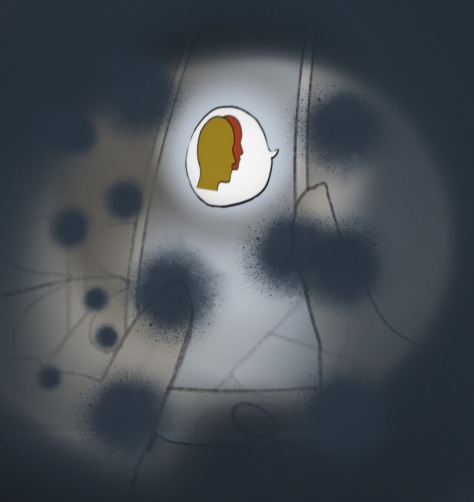
“My fingers aren’t there! I’m sat scrolling through my newsfeed on social media, trying to tap on a message to open it and my fingers have disappeared. I can read the screen of my phone but there are blank, blurry patches where my fingers should be. I move them – or do I? I can’t see them and I’m never quite sure, when I can’t see bits of my body, whether I can actually move them or not.
I slowly move my phone around and realise that I have tunnel vision with a ring of pixelated, almost kaleidoscopic vision around it. If I move my head, I can fix what I am looking at into the centre of my vision so that I can see
it. This isn’t right, but I feel OK. I quickly scan through my body: head – OK, no pain, no dizziness; limbs – OK, no pain, they can move; body – my heart isn’t doing anything unusual, no pain or fluttering or sickness from my tummy. I can think normally; I’m not worrying; I’m not
preoccupied; I’m just going about my business as usual and this has happened. This visual disturbance lasted for a few minutes and then disappeared as suddenly as it came. It happened a few times over the next few days….
My dad died the day before I experienced this visual disturbance for the first time” (from Good Autism Practice Journal, May 2020)
Perseveration – where sensory processing gets even weirder!
This short film from National Autistic Society shows the phenomenon of perseveration.
Before I understood that I was Autistic, I firmly believed that there was something seriously wrong with me. A school bell bringing the day to a close and piercing my ears and body with pain, would still be looping round my brain and body hours later – just as painfully. Conversations and images from last week would be on continuous autoplay in my mind and jolt me awake as I was about to drop off to sleep. Situations that involved lots of information and sensory input to be processed were the most likely culprits of these invasive and intrusive sensory experiences. It is as if my brain and body are an airport and all the sensory and cognitive input are aeroplanes that land on the runways and take their place neatly in the various hangars. Only, if there is too much input, these planes have to stack up and keep circling until the runways are cleared. A simple way for people to help reduce this is to give me enough time to process series of instructions, particularly when they are being given to me in environments that have the potential to overwhelm me.
My Secret Weapon
Perseveration can be painful, distressing and overwhelming. It can also be my secret weapon!
This is because it is not only the painful and distressing sensory input that gets stuck in my body. Positive sensations can too. I have a good life on the whole. Proactively keeping myself regulated enables me to be at my best for trying new things and coping with the unpredictability of life. Just as certain sensory input has the potential to be traumatising, there are other types of sensory input that bring me joy. There are further types of sensory input that are regulating and if I give myself little top ups of this input throughout the day, I can remain in an optimal state and have increased resilience. Each of us will have our unique preferences for regulating sensory input, and for me, the types of input that perseverate most effectively include listening to music with lots of bass (so I can feel it throughout my body and not just in my ears), glissandos (a musical term for when one note glides into another – Led Zeppelin’s Whole Lotta Love, Gershwin’s opening bars to Rhapsody in Blue, and loads of Pink Floyd tracks use glissandos), weight training and stretching, weighted blankets and bear hugs. Proprioceptive input seems to be particularly effective at perseverating in a positive way.
I hope this blog has provided some knowledge and reassurance to those who are scared, confused or overwhelmed by their sensory experiences. Why not read some of the blogs and information I’ve provided links to and explore how you can use sensory input to become and remain regulated…
And never stop seeking those sensations that stick around in a positive way, or that bring you joy!

